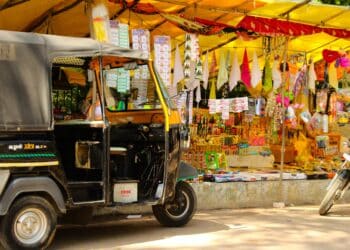As more and more travelers seek to immerse themselves in nature, glamping—luxury camping—has surged in popularity worldwide. Nowhere is this truer than in Norway, with its stunning landscapes and deep-rooted outdoor traditions. Glamping in Norway allows travelers to enjoy the country’s natural beauty without compromising on comfort, making it an attractive option for those seeking a unique, memorable vacation.
However, alongside our increasing love for the outdoors, there’s also a growing awareness of our responsibility to protect it. This consciousness has sparked interest in sustainable living practices, including the concept of a sustainable wardrobe. A sustainable wardrobe represents the idea of consciously curating your clothes, taking into account factors like environmental impact, labor conditions, and garment longevity.
This article by WonderInn aims to merge the concepts of glamping and sustainability, providing guidance on building a sustainable wardrobe for your Norwegian glamping adventure. We’ll explore why this matters, what it looks like, and how it can enhance your travel experience, ensuring that your glamping adventure respects and contributes to the preservation of Norway’s breathtaking environment.
Understanding Sustainable Fashion
Sustainable fashion is a broad and somewhat nebulous term, encompassing multiple facets. At its core, sustainable fashion revolves around the principles of producing, consuming, and using clothes in ways that are most considerate of humanity and the environment. It seeks to minimize the environmental impact and ensure ethical labor practices throughout the garment’s entire life cycle—from design and manufacturing to transport, usage, and eventual disposal.
The importance of sustainable fashion arises from the environmental footprint of the fashion industry. With its resource-intensive production processes, heavy water usage, chemical pollution, and high levels of waste, the industry is a significant contributor to environmental degradation. Additionally, poor labor conditions in many parts of the global fashion supply chain raise ethical concerns.
Sustainable fashion addresses these issues, aiming to lessen environmental damage and promote fair labor practices. It encourages practices such as using organic and recycled materials, reducing water and energy consumption, minimizing waste, and ensuring fair wages and safe working conditions.
As we travel, we inevitably impact the places we visit, and our fashion choices form part of this impact. A sustainable wardrobe reduces this footprint, making it a vital component of responsible travel. By choosing sustainable clothing, we support ethical labor practices, promote the use of eco-friendly materials and processes, and help extend the lifecycle of garments.
Whether you’re trekking through Norway’s forests or relaxing in your riverside accommodation, your clothing choices play a part in preserving these landscapes for future generations. Embracing sustainable fashion doesn’t just contribute to a healthier planet—it’s a statement of respect towards the lands you explore and the people who inhabit them.
Key Elements of a Sustainable Glamping Wardrobe
When glamping in Norway’s diverse landscapes, from its sun-drenched coastal regions to its icy northern terrain, certain clothing items are essential for comfort and safety. However, beyond merely serving your immediate needs, these items should also reflect the principles of sustainable fashion.
- Quality Outerwear: A robust, water-resistant jacket is a must-have for Norway’s unpredictable weather. Look for jackets made from recycled or sustainable materials, designed to last for many seasons. Similarly, quality thermals, hats, gloves, and scarves, ideally made from natural or recycled fibers, will keep you warm during chilly nights or winter trips.
- Versatile Layers: Due to varying weather conditions, layering is key. Opt for high-quality base layers made from sustainable materials like organic cotton, bamboo, or Merino wool. They should be breathable, quick-drying, and temperature-regulating.
- Durable Footwear: Sustainable footwear should be durable, functional, and made ethically. Choose waterproof hiking boots for outdoor activities and comfortable, ethically-made slippers for cozy evenings in your glamping tent.
Quality and durability are vital in a sustainable wardrobe. Instead of fast-fashion items that wear out quickly and end up in landfills, invest in well-made, durable clothes that withstand the test of time. This not only reduces waste and resource use but can also save you money in the long run.
Versatility and functionality are equally important. Opt for clothing items that can be worn in multiple ways and suited for various weather conditions and activities. This allows you to pack light, reducing the carbon footprint of your travel, while ensuring you’re prepared for everything your glamping adventure might throw at you.
In essence, a sustainable glamping wardrobe merges practicality with respect for the environment and society. It supports you in experiencing the beauty of Norway, while also contributing to the preservation of these precious landscapes and ethical labor conditions worldwide.
Sourcing Sustainable Clothing
Building a sustainable wardrobe for your glamping adventure in Norway involves thoughtful sourcing of clothing. Not all brands that claim to be sustainable genuinely adhere to eco-friendly and ethical standards. However, with some knowledge and research, you can find those that align with your values and needs.
- Research Brands and Retailers: Investigate brands’ sustainability credentials before purchasing. Many genuine sustainable brands are transparent about their manufacturing processes, materials used, and labor practices. Look for comprehensive information on brands’ websites and third-party certifications like Fair Trade, Global Organic Textile Standard (GOTS), or Bluesign.
- Support Local and Ethical Businesses: While preparing for your trip, consider purchasing from local Norwegian brands that prioritize sustainability. This not only supports the local economy but also reduces your purchase’s carbon footprint as the goods have less distance to travel. Additionally, buying local often gives you the opportunity to learn more about the production processes and materials firsthand.
- Spot and Avoid Greenwashing: Greenwashing is when companies give a false impression of their environmental impact. Be cautious of vague or unsupported claims like “green,” “eco,” or “natural,” and be wary of brands that only have a small “sustainable” collection within a wider range of non-sustainable products. Always look for clear, specific information about how and why the product is sustainable.
Creating a sustainable wardrobe for your glamping trip in Norway is not just about the clothes you wear—it’s about supporting a system that respects the environment and people. By choosing sustainable brands, you’re casting a vote for the kind of world you want to live in, one where nature is cherished, and all workers are treated fairly. Together, we can make a difference—one outfit at a time.
Packing for a Glamping Adventure

Equally important to curating a sustainable wardrobe is learning to pack efficiently for your glamping adventure. This not only makes traveling more comfortable but also aligns with the principles of sustainability—minimizing waste and prioritizing necessity over excess.
- Light and Efficient Packing: Begin by laying out all items you think you’ll need. Then, critically evaluate each one and eliminate anything non-essential. Pack outfits that can be mixed and matched to create different looks with fewer items. For clothing, follow the rule of three: one to wear, one to wash, one to dry. Use packing cubes or roll your clothes to save space.
- Adapting to Norwegian Weather and Activities: Norway’s weather can be quite unpredictable, making layering a practical approach. Ensure you have items that can be layered for colder weather and de-layered when it’s warmer. Pack clothes suitable for the activities you’ll be undertaking—whether that’s hiking, fishing, or simply relaxing by your glamping accommodation. Remember, functionality is fashionable in the outdoors.
- Minimizing Waste with Reusable Accessories: To further reduce your environmental impact, consider packing reusable travel accessories. A refillable water bottle, for instance, can save numerous plastic bottles from waste. Similarly, bring along a reusable shopping bag for any groceries or souvenirs you might buy. If you’re a coffee or tea lover, a reusable travel mug is a must.
Remember, packing for a glamping adventure is all about balancing your personal needs with a broader commitment to sustainability. A well-packed, sustainable travel bag isn’t just good for the planet—it’s also a testament to mindful living and thoughtful travel, enhancing the overall quality of your Norwegian glamping experience.
Caring for Your Sustainable Wardrobe
Possessing a sustainable wardrobe doesn’t stop at the point of purchase. How you care for your clothes, how you give them a second life, and how you dispose of them when they’ve reached the end of their lifecycle all play pivotal roles in maintaining a truly sustainable wardrobe.
- Maintaining Your Clothes: Regular maintenance can significantly extend the life of your clothing items. Always read and follow the care instructions on the garment label. Try to wash less frequently to conserve water and reduce wear and tear, and when you do wash, do so on a cold cycle to save energy. Line drying instead of using a tumble dryer can also increase the longevity of your clothes and reduce energy consumption.
- Repair and Upcycle: Even with the best care, clothes can still wear out. But that doesn’t mean they’re no longer useful. Learning basic repair skills, like sewing a button or mending a tear, can breathe new life into a piece. If an item no longer fits or suits your style, consider upcycling it into something new or altering it for a fresh look.
- Responsible Disposal and Donation: Eventually, clothing items reach the end of their lifecycle. When this happens, don’t just toss them in the bin. Many textiles can be recycled or composted, depending on the material. Alternatively, consider donating to a charity or second-hand store. Some brands even offer recycling programs or rewards for returning their used items.
Sustainability in fashion is a holistic process—it begins with mindful purchasing and continues with careful maintenance and thoughtful disposal. By respecting each stage in the life of your clothes, you’re not only enhancing your connection with your wardrobe but also contributing to a healthier planet and a fairer fashion industry. From your glamping adventure in Norway to your everyday life, these principles can guide you towards a more sustainable and rewarding relationship with your clothes.
Conclusion
Creating a sustainable wardrobe for glamping in Norway transcends simply selecting the right attire. It’s about mindful consumption and a commitment to environmental respect. Embracing sustainable fashion not only reduces your carbon footprint, but it also fosters fair labor practices and encourages quality and longevity in clothing. As you curate your glamping wardrobe, every choice you make, from supporting ethical brands to the mindful care of your clothing, contributes to a more sustainable future. So, as you prepare for your next adventure, remember that every decision we make adds a thread to the fabric of our world, making sustainability an integral part of our narrative.














